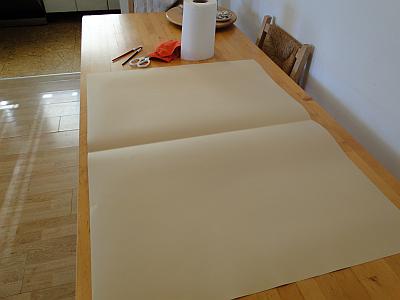how to make a codex
I'm learning how to make a codex as part of a course I am following on Coursera, called Deciphering Secrets: The Illuminated Manuscripts of Medieval Europe.
Along with studying medieval times and the world of manuscripts, we have the option of a practical task, completed over several weeks, that takes us from making our "parchment" using card paper, to binding the finished codex.
After one week of basics, we're on to the actual production of our masterpiece.
So here is my little journal describing each step of the journey!
Discover the finesse - and the flaws - of parchment as I brew the coffee to stain my pieces of card and mull over options to make my medieval manuscript truly authentic!
Now we cut up our parchment, then fold the pieces to make the quires.
It wasn't as easy as it sounds, but I ended up making four quires that look pretty good, I think.
Designing the page layout of a manuscript was a challenge for me, as someone who finds basic maths a mind-numbing experience.
Funnily enough, I managed to work out my angles and dimensions, and learned an awful lot along the way :)
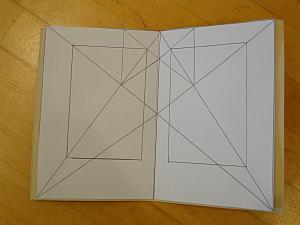
Palaeography/writing the codex
This fascinating part of the course looked at scripts found in medieval European manuscripts and how they developed.
It took me hours to produce amateur renderings of a few letters - the skill of the copyists cannot be overestimated :)
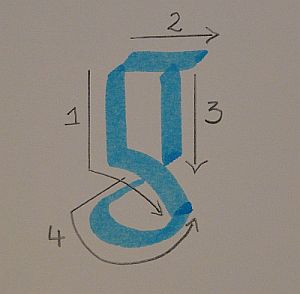
Let's fill those quires with decoration, illumination, ornamentation and inspiration!
Again, a lot of material covered but a lot of fun also in our "hands-on" project.
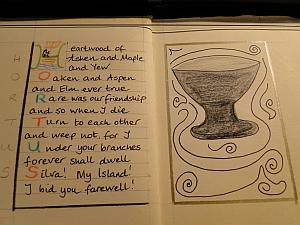
The last part of our course takes us onto binding our manuscript. Time to get out the needle and thread, and pour a large glass of wine :)
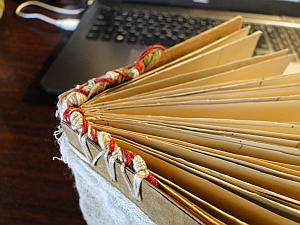
Digitised collections that I have found useful, including those that have reusable content; links to other sites with info about the world of medieval codices.
Find out where you can discover - and sometimes share - wonderful manuscripts such as this:
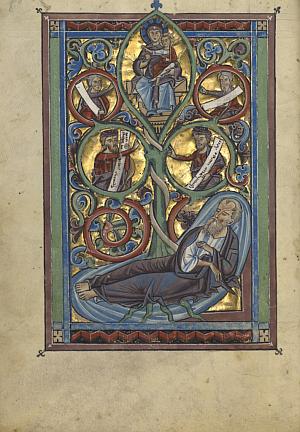
Unknown
The Tree of Jesse, about 1240–1250, Tempera colors, gold leaf, and silver leaf on parchment
Leaf: 22.7 × 15.7 cm (8 15/16 × 6 3/16 in.), Ms. Ludwig VIII 2 (83.MK.93), fol. 7v
The J. Paul Getty Museum, Los Angeles, Ms. Ludwig VIII 2, fol. 7v
- Home
- Make a Codex
